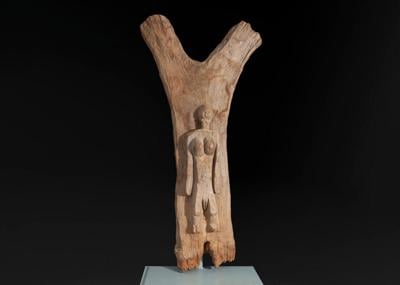The Togu na is the most important public gathering place for the Dogon people of Mali in West Africa. These low structures, supported by three rows of wooden posts and topped with a thick roof of millet stalks, are designed to provide shade and a calming environment, encouraging seated discussions.
The wooden posts, made from the durable kile wood (Prosopis africana), are among the most impressive works of traditional African art, adorned with carvings that depict men and women with exaggerated genitalia, symbolizing fertility and diverse gender roles in Dogon society. These posts are celebrated globally, featured in galleries, private collections and museums — like this one, on view at the New Orleans Museum of Art.
The Togu na serves as a venue for village elders to discuss community issues and customary law. Its low height, only 4 to 5 feet, discourages standing and posturing, promoting calm and respectful dialogue. Beyond its artistic value, the Togu na represents a tradition of healthy public discourse, emphasizing mutual respect, empathy and a good sense of humor.
Especially during this national election season, the stories from Dogon's Togu na remind us of the importance of engaging in spirited debates while respecting differing viewpoints, regardless of the platform.

